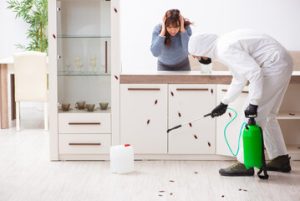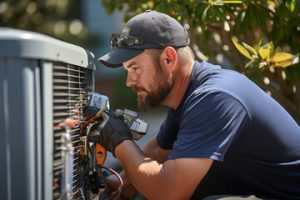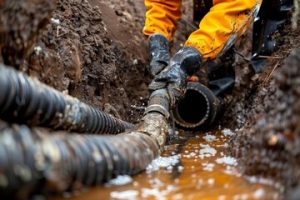Pests are unwanted organisms (insects, bacteria, fungi, viruses, weeds and vertebrate animals) that damage or devalue crops, structures, food storage, livestock, wildlife and landscapes. Unwanted pests also introduce diseases that threaten human health and safety.

Pest control is a combination of preventive, suppression and eradication methods. Preventive measures include sanitation, removing overwintering sites, and encouraging natural enemies to attack pest populations. Visit https://www.benspest.biz/ to learn more.
The old saying “An ounce of prevention is worth a pound of cure” holds true when it comes to pest control. While many people think that pest control involves battling pests after they’ve invaded a home, the truth is that it’s much easier and cheaper to prevent pests from entering in the first place. This is why the modern approach to pest control places a strong emphasis on prevention measures.
Preventive measures include keeping the home clean and free of clutter, sealing cracks in the home’s exterior and other structures, storing food in the refrigerator, fixing standing water issues, and regularly sweeping and vacuuming floors. In addition, homeowners should frequently inspect their property for signs of infestation, such as bite marks and chewed-up belongings. Certain odors can also be a sign of a pest problem, such as musty or ammonia-like smells.
In the yard, it’s important to keep grass and shrubbery trimmed so that it doesn’t provide a place for pests to hide. It’s also a good idea to remove any piles of leaves or other debris from the yard as they can attract pests. Standing water can also be a source of pests, so it’s important to regularly check and fix any leaks in the home’s roof or plumbing.
Practicing integrated pest management (IPM) techniques is another preventive measure that can reduce the need for chemical treatments and help maintain a healthy home environment. IPM includes a combination of physical, biological, and chemical controls to manage pests while minimizing exposure to hazardous chemicals and reducing environmental impacts.
In addition to the tips discussed above, partnering with a professional pest management company can take prevention to a whole new level. Pest professionals have the knowledge, experience, and resources to devise a prevention plan tailored to the unique needs of each client. This can include anything from educating children about pests to identifying specific problem areas where a pest infestation could occur. By combining preventive and chemical controls, professionals can minimize pests while providing clients with a safe, comfortable, and beautiful living environment.
Chemical Treatments
Chemical pest control uses synthetic pesticides to eliminate pests quickly and efficiently. They are effective against a wide range of insects and rodents, including ants, roaches, termites, flies, and mosquitoes. They are most useful during severe pest outbreaks, when rapid action can prevent significant crop damage before natural predators or biological controls can respond. They are also more potent than biological treatments, and can wipe out entire pest populations with a single application. However, chemical treatments may have negative environmental impacts, contaminating soil and water, and potentially posing health risks to humans and pets.
Selecting the right chemical treatment depends on accurate pest identification and monitoring. Accurate identification ensures that the product effectively targets the problem species, reducing the risk of harming other organisms and ecosystems. In addition, using selective products limits exposure to non-target organisms and minimizes the risk of resistance development. Proper application and careful record-keeping also reduce the potential for long-term risks and contamination.
Integrated Pest Management (IPM) is an approach to pest control that emphasizes prevention and other low-risk strategies, with chemical solutions reserved for when they are needed most. IPM incorporates monitoring to assess pest numbers and compare them to action thresholds, helping farmers to determine when it is time for a more drastic measure. In addition, IPM strategies use precise methods to limit the amount of chemical used, minimizing ecological impacts and long-term risks.
IPM techniques include preventative measures such as keeping garbage cans closed and away from buildings, and trimming bushes and other foliage to reduce pest habitat. They also employ biological and physical control methods, such as introducing natural enemies or trapping pests, to keep populations below damaging levels.
Chemical pest control offers fast and reliable results during critical pest outbreaks, but it can be expensive and ineffective over the long term. Regulatory hurdles can also add to the cost, and many chemicals require specialized training and certification for safe use. In addition, repeated use of chemical treatments can lead to pesticide resistance, which can render them ineffective over time. Biological and physical pest control methods offer more sustainable alternatives, though they can take longer to work.
Inspections
Pests can pose significant health and safety risks to occupants of buildings and their surroundings. They may taint food, transmit diseases via urine and feces, and cause structural damage to homes and businesses. Many pest infestations result in high costs for eradication and repair. Regular inspections help detect pest problems early and reduce the cost of treatment or eradication.
A pest inspection involves more than a cursory glance around the home to look for signs of infestations. Trained inspectors examine the interior and exterior of structures, focusing on secluded areas that can harbor pests. These include attics, crawl spaces, basements, and wall cavities. Inspectors also evaluate the property for conditions that attract pests, such as leaking roofs and poorly-sealed windows.
Having a pest-free home contributes to a healthier living environment, especially for those with young children and elderly family members who are more susceptible to respiratory issues. Additionally, pest infestations can increase the risk of infection by introducing airborne allergens and bacteria into living spaces. Regular pest inspections help minimize these health issues and promote a healthy living environment for the entire household.
When deciding on a pest control company, it is important to choose one with key qualifications and certifications from recognized industry organizations. The chosen inspector should have extensive experience in the field and a reputation backed by positive customer reviews. In addition, the chosen inspector should be fully insured and licensed to perform pest inspections on commercial or residential properties.
Prior to conducting a pest inspection, a home or business owner should clear any piles of debris that could provide hiding places for pests. Keeping surfaces clear allows the inspector to focus on baseboards, walls, and other secluded areas of the structure. Additionally, a homeowner should clean food containers and ensure that trash is properly sealed.
Before the inspector arrives, a home or business owner should review the checklist that they will be using to inspect the property. This will provide the inspector with a comprehensive assessment of the property, making it easier for them to identify and address any pest infestations. The checklist will also provide a record of the inspection for future reference.
Prevention
Practicing preventive pest control measures, which include regularly scheduled inspections and consistent monitoring, is an important aspect of maintaining your home. This approach is often less expensive than reactive treatments. It also helps prevent the spread of diseases and enables you to feel confident that your property is being proactively maintained. A professional team has the expertise and resources to identify potential infestations early, so they can be treated before they develop into costly problems.
Prevention involves creating an environment that is not conducive to pests, which means removing food sources and other attractions. This can be done by cleaning up and properly storing food, managing waste, sealing entry points, and removing attracting clutter. It also involves repairing cracks, clearing gutters, and reducing moisture levels.
In crop growing, prevention is primarily achieved by choosing plants that are well-adapted to the local climate and planting them in locations where they can thrive. Plants that are resistant to disease and insect damage are also preferred. Cultural methods, such as correcting soil conditions, using irrigation systems that are adjusted to the site and crop, and applying appropriate amounts of fertilizer can help suppress pest populations without the use of chemicals.
When modern pesticides were first developed, they were used extensively. However, this quickly led to the development of pests that were resistant to certain chemicals. This resulted in the need to combine multiple control measures into a comprehensive program called integrated pest management (IPM). IPM focuses on controlling pests through a combination of mechanical, cultural, biological, and chemical tactics.
The first step in IPM is to monitor and scout the fields. This allows for the accurate identification of the pests and their host plants. It also allows for the determination of economic or aesthetic injury thresholds, which indicate the level of damage that warrants action. It is then possible to evaluate whether the pest population will be controlled naturally or by chemical intervention.
The goal of IPM is to achieve good crop production without harming the environment, other organisms, or people. This is accomplished by assessing the population of pests in an area, considering what type of damage they are doing to the plant, and then developing a strategy to reduce the pest population. The use of pesticides is usually only an option if the other control methods are not working or if the problem has reached an unacceptable level.


